This post is part of the Agriculture and Ecosystems Blog’s month-long series on Resilience.
Nitrogen and phosphorus are indispensable nutrients to crop plants. Their importance in achieving high crop productivity cannot be overestimated. Every year, farmers apply millions of tons of chemical fertilizers and manure rich in nitrogen and phosphorus to improve crop yields; these two nutrients are thus essential for food security.
While nitrogen (N) and phosphorus (P) are beneficial for crop production, excess nitrogen and phosphorus act as water pollutants. When too much nitrogen and phosphorus reach water bodies, eutrophication can occur, a situation where the fast growth of algae stimulated by enrichment of nitrogen and phosphorus depletes dissolved oxygen with potentially disastrous effects on aquatic ecosystems. Moreover, high levels of nitrate can also adversely affect human health; they can cause methemoglobinemia or blue baby syndrome, a condition found especially in infants.
The outlook is alarming: large additional N and P emissions from agriculture projected to 2050
A wide range of human activities leads to nitrogen and phosphorus emissions in water environments but agriculture is generally the main culprit. Anticipated agricultural intensification creates elevated concerns about the environmental consequences of agricultural nitrogen and phosphorus emissions in the future. This issue was explored in a recent study supported by Veolia North America under the CGIAR Research Program on Water, Land and Ecosystems (WLE). Using available data, the study modeled annual rates of nitrogen and phosphorus emissions from global agricultural production systems out to 2050 under alternative global agricultural intensification pathways.
The results of the study show that annual emissions of N and P from global agricultural production systems amount to 46 million metric tons (mmt) and 2.7 mmt, respectively, during the base period of 2000-05. Agriculture intensification to meet growing food demands and climate change will lead to an increase in global agricultural N and P emissions, but the magnitude depends on the chosen socioeconomic and climate change scenarios.
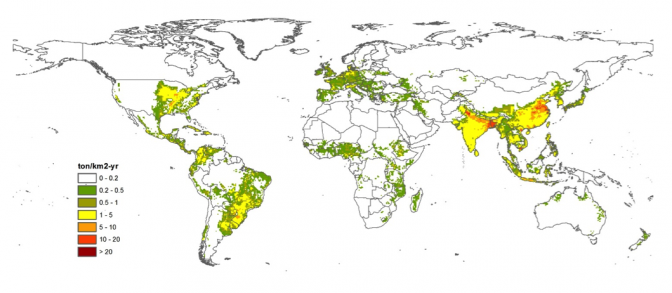 Nitrogen emissions from agriculture in the base period (2001-2005)
Nitrogen emissions from agriculture in the base period (2001-2005)
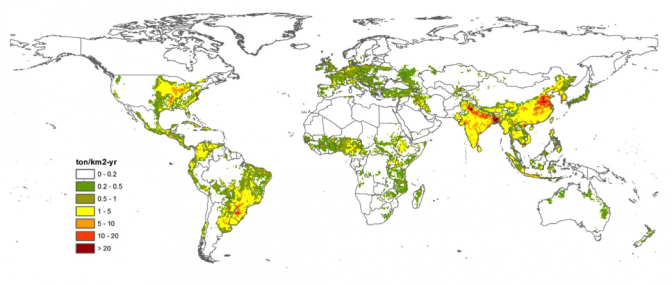 Nitrogen emissions from agriculture in 2050 (under projected warmer, drier climate change scenario with medium socioeconomic change and 20% nutrient use efficiency improvement for fertilizers)
Nitrogen emissions from agriculture in 2050 (under projected warmer, drier climate change scenario with medium socioeconomic change and 20% nutrient use efficiency improvement for fertilizers)To meet the future food needs of wealthier populations under a projected warmer, drier climate, global N emissions might well grow by 35% to 59% and global P emissions by 4% to 11%. The largest increase of N and P emissions occurs when a “pessimistically” high population growth is combined with low GDP growth and no improvement in fertilizer use efficiency, while low population growth combined with larger GDP growth and relatively rapid improvements in fertilizer use efficiency (of 40% over the projections period) results in lower emissions. Under an alternative hotter, wetter climate, annual emissions by 2050 would be even larger, with increases ranging from 48% to 76% (nitrogen) and 15% to 26% (phosphorus).
These results are alarming and suggest potentially severe future negative impacts from agricultural intensification on aquatic environments.
What can be done?
Without sufficient attention to this looming increase in nitrogen and phosphorus emissions, agricultural intensification will pose a major threat to aquatic environments and the people that depend on them. Several solutions exist, however, to improve both social and ecological resilience under sustainable agricultural intensification:
1) Enhanced nutrient use efficiency:
Higher nutrient use efficiency can substantially reduce emissions and have been incorporated already in our projections. Nutrient use efficiency is a trait that is under development for key staple crops, which are also the major consumers of fertilizers. Other strategies in this area include enhanced fertilizer management, with practices such as deep placement of urea; increased use of precision agriculture methods, such as yield monitors, to apply fertilizers where they are needed most, or generate the highest yield impacts; and replacement of furrow irrigation with drip, which allows direct fertilizer application to the crops and their root systems.
2) Phase out fertilizer subsidies:
Many studies have shown that fertilizer subsidies—generally for urea (N) —lead to over-application of the cheaper input and unbalanced application of fertilizers (as generally only N is subsidized). Studies also show that these subsidies do not reach the poor, i.e. they tend to mostly support rich farmers, who are least in need of such support.
3) No-till or reduced tillage and conservation measures:
Terraces, soil or stone bunds, or buffer strips along water bodies have shown to dramatically reduce erosion and thus protect water bodies from the adverse effects of N and P runoff. Crop rotations with nitrogen-fixing (cover) crops are also an important conservation and fertilizer conserving measure.
4) Close nutrient cycles:
While the focus here is on agriculture, industries and households also produce large quantities of N and P, which can be recovered more easily from effluents and sewage and can be reused in agriculture. New technologies continue to be developed and applied in most developed countries, but much more needs to be done in the low-income countries where most future emissions are projected to occur.
While all these options exist and many new ones are being developed, the capacity of environmental management in many of the countries where nutrient loadings will increase the most remains limited. Cooperation with the international community is needed to help these countries in their efforts to fight against water pollution.






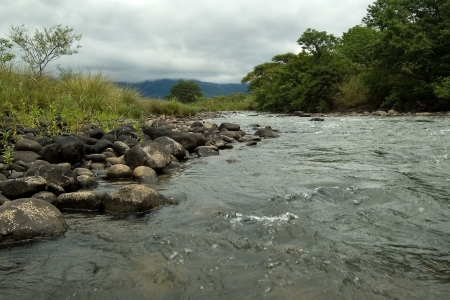








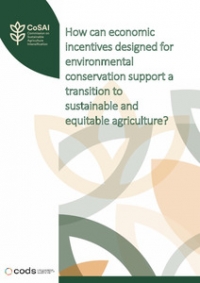
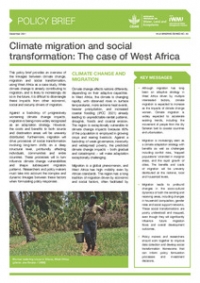
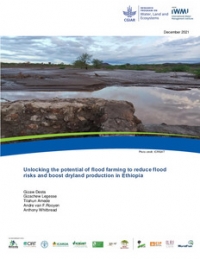
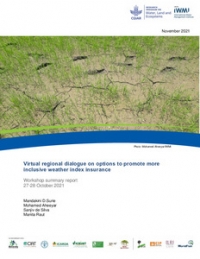
Comments
A new nanotechnology went public on 4/28/2016 that remediates phosphate from aqueous effluent at off-the-chart speeds > view accelerated remediation demo at https://www.youtube.com/watch?v=c9cRpIVwpuw.